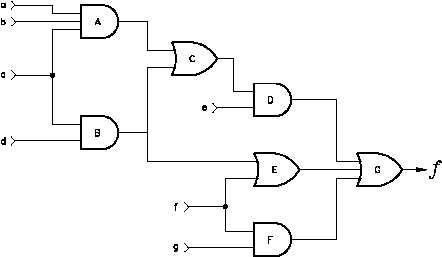INTRODUCTION TO THE TYPES
DOE-HDBK-1016/1-93
Introduction to Print Reading
OF DRAWINGS, VIEWS, AND PERSPECTIVES
Logic Diagrams and Prints
Logic diagrams and prints can be used to depict several types of information. The most common
use is to provide a simplified functional representation of an electrical circuit, as illustrated in
Figure 10. For example, it is easier and faster to figure out how a valve functions and responds
to various inputs signals by representing a valve circuit using logic symbols, than by using the
electrical schematic with its complex relays and contacts. These drawings do not replace
schematics, but they are easier to use for certain applications.
Figure 10 Example of a Logic Print
Fabrication, Construction, and Architectural Drawings
Fabrication, construction, and architectural drawings are designed to present the detailed
information required to construct or fabricate a part, system, or structure. These three types of
drawings differ only in their application as opposed to any real differences in the drawings
themselves. Construction drawings, commonly referred to as "blueprint" drawings, present the
detailed information required to assemble a structure on site. Architectural drawings present
information about the conceptual design of the building or structure. Examples are house plans,
building elevations (outside view of each side of a structure), equipment installation drawings,
foundation drawings, and equipment assembly drawings.
Fabrication drawings, as shown in Figure 11, are similar to construction and architectural drawing
but are usually found in machine shops and provide the necessary detailed information for a
craftsman to fabricate a part. All three types of drawings, fabrication, construction, and
architectural, are usually drawn to scale.
PR-01
Rev. 0
Page 14

